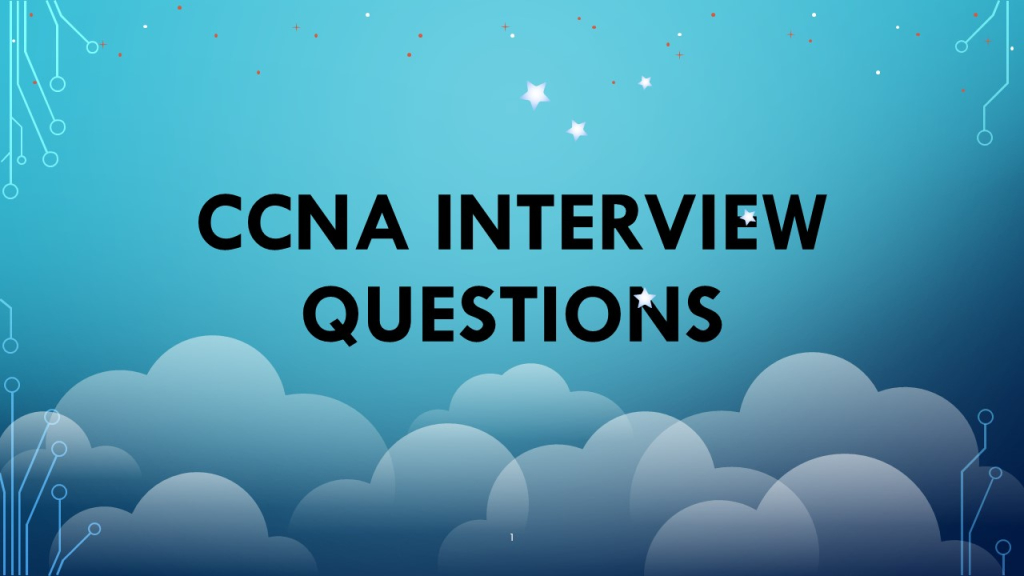1. What is the difference between a switch and a router?
Ans: Switch is a device which is used to connect multiple computer’s with in a single network and allow to transfer data between them.Router is used to connect multiple network’s and route between them based on IP addresses.
2. What is the purpose of the subnet mask in IP addressing?
3. How does TCP/IP work and what are its key components?
- IP (Internet Protocol): responsible for routing data packets to their destination.
- TCP (Transmission Control Protocol): responsible for reliable data transfer by dividing data into segments, retransmitting lost packets and reassembling the data at the receiver.
- DNS (Domain Name System): responsible for converting human-readable domain names into IP addresses.
- HTTP (HyperText Transfer Protocol): responsible for transmitting data over the web.
- FTP (File Transfer Protocol): responsible for transferring files over a network. These protocols work together to transfer data between devices over the internet or other networks.
4. Can you explain the OSI model and its purpose?
Ans: The OSI (Open Systems Interconnection) model is a theoretical framework that defines the functions of a communication system. It divides the communication process into 7 layers, each layer providing specific services to the layer, There are 7 layers :
- Physical: deals with the physical transmission of data.
- Data Link: provides reliable transmission of data over a physical network.
- Network: responsible for routing and forwarding data between networks.
- Transport: provides reliable end-to-end data transfer and error recovery.
- Session: responsible for establishing, maintaining and terminating connections between applications.
- Presentation: deals with data representation and encryption.
- Application: provides services to application programs and communicates with other systems.
communication systems. It helps to understand the different functions and services that need to be performed at each layer, and how they interact with each other.
5. What is the importance of IP routing in computer networks?
Ans: IP routing is the process of forwarding data packets from a source to a destination over a network. It is a key component of the Internet Protocol (IP) and is critical for the functioning of computer networks. The importance of IP routing is as follows:
- Connectivity: IP routing provides a way to connect different networks and enables communication between devices over the internet or other networks.
- Scalability: IP routing allows networks to grow and expand, accommodating more devices and users, without affecting the performance of the network.
- Reliability: IP routing algorithms can dynamically select the best path for data to reach its destination, providing a reliable and efficient communication channel.
- Security: IP routing can be used to implement security measures such as firewalls and access control lists, to protect networks from malicious attacks.
- Cost-effectiveness: IP routing enables efficient use of network resources, reducing the cost of network operations and maintenance.
For Free Demo classes Call: 91-8149911142
Registration Link: Click Here!
6. What is Routing?
7. What do you Mean by a data packet?
8. What do you mean by a router?
- Discovering network
- Selecting best and shortest path
9. Name Types of routes that are available in router?
Ans: Static routing, Default routing, Dynamic routing
- Static Routing: In static routing administrator must hand type all the remote networks into routing table manually if any changes happen then administrator has to update all the routers manually.
- Default Routing: Default route is used when no other route are available for specific destination and it is used to minimize the database.
- Dynamic Routing: Dynamic routing is process of routing protocol running on router and exchanging routing information to each other when the changes happen routing protocol update all the routers automatically.
10. What do you mean by switching?
Ans: Switching is a process in computer networks that enable us to interconnect links to form a larger networkFor Free Demo classes Call: 91-8149911142
Registration Link: Click Here!
Mentor
Amol Gaikwad
This Content are contended from internet.

